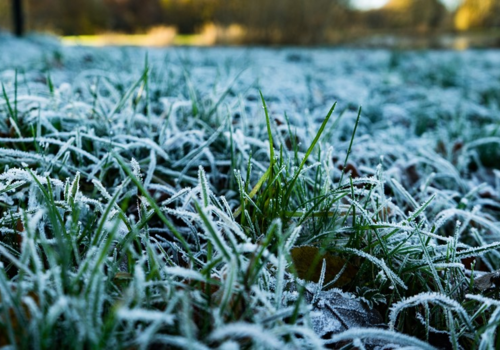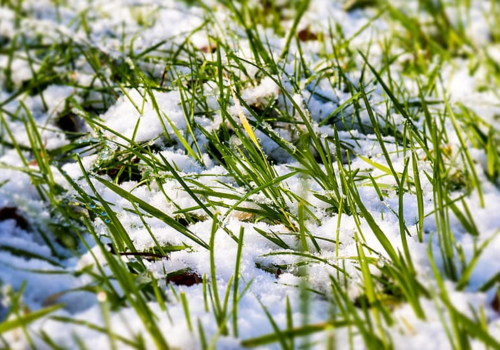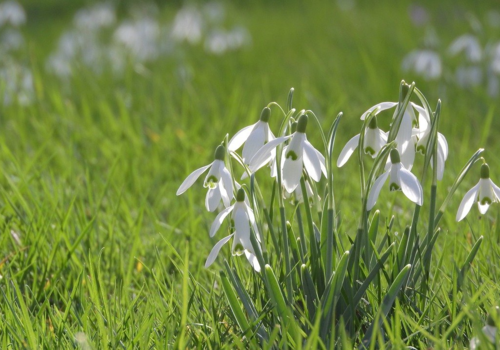
When it comes to seasonal lawn care, January might seem like the time of year to sit back and leave your grass well alone. It’s true that lawns don’t need the same regular care during winter as they do in summer, but much like in December, that doesn’t mean there’s nothing to do.
If you want a healthy, green lawn all year round, it’s important to keep on top of monthly lawn care. In the first installment of our lawn care calendar, find out which tasks to tackle in January and which ones to avoid.
January Lawn Care: Dos and Don'ts
Do:
- Plan tasks according to the weather
- Keep a close eye on the health of your lawn
- Apply autumn/winter fertiliser
- Aerate and try to reduce any sitting water
- Continue to remove debris and leaves
- Brush away worm casts that have built up over the winter before mowing
- Keep off the grass as much as possible
Don't:
- Be concerned if your grass isn’t growing, it might need slightly warmer conditions to grow
- Mow the lawn if the weather is very cold and growth is slow
- Carry out intensive scarification
- Cut grass too short
What should I do to my lawn in January?
The month of January is part of the low season for lawns in the UK. Cold temperatures and shorter daylight hours minimize growth, so you won’t need to mow your established lawn very often. But what maintenance or lawn treatments should you be considering at this time of year?
Keep off the grass!
During the winter months, it’s best not to step on your lawn too frequently. When the ground is wet or frosty, it’s particularly important to keep off the grass.
Walking on frosty grass can scorch it, which will leave it looking black or brown. Stepping on a wet or waterlogged lawn will compact the soil, meaning amongst other things that it can’t drain as well. So if possible, you should only step on your lawn when conditions are dry and frost-free.
For those with a large lawn, it’s especially important to avoid walking on it when wet or frosty to prevent soil compaction and damage.
Remove Weeds and Moss
Weeds and moss can be a persistent nuisance, competing with your grass for water and nutrients. Here are some effective tips for removing them and maintaining a healthy lawn:
- Identify the Type of Weed: Different weeds require different removal methods. Identifying the type of weed you’re dealing with will help you choose the most effective approach.
- Use a Lawn Weedkiller: Apply a lawn weedkiller specifically designed to target lawn weeds without harming your grass. Follow the manufacturer’s instructions for the best results.
- Remove Moss: Moss can be removed using a moss killer or a rake. Be gentle to avoid damaging the underlying grass. Removing moss will help your lawn breathe and grow more effectively.
- Prevent Regrowth: To prevent weeds and moss from regrowing, improve your soil quality and maintain a healthy lawn. Regular aeration, proper fertilisation, and consistent mowing can all help keep these unwanted plants at bay.
Can I cut my lawn in January?
In short, yes, you can mow your lawn in January. However, there are a few things to be aware of.
Firstly, don't cut your lawn when the ground is wet. Wet soil will compact when you step on it, and this makes it harder for important nutrients to circulate around the grass seed. This will hinder grass growth.
Secondly, don't cut the grass too short. You should leave at least two-thirds of the grass so that the blades can take enough energy from the limited winter sunshine. You may need to raise your mower blades to achieve a suitable cutting height.
Can I use lawn feed or fertilise my lawn in winter?
All growing things need to be nourished, so yes, you can feed your lawn in winter. Remembering to fertilise your lawn during the winter months can help produce stronger growth in spring. This is best done no later than November though, so you can cross it off January’s ‘to-do’ list.
During the winter, grass roots are taking their ‘downtime’. They aren’t under constant pressure to supply food to sustain the growth of the grass blades. They’re recuperating their strength. Given the right nutrients, they can grow deeper, build strong cell walls, and get set for really healthy growth in the warmer season.
Stronger roots are also better at fighting disease, which can be rife in damp conditions. So, feeding your lawn in winter will provide many benefits. Proper fertilization during winter can also help prevent the buildup of lawn moss, which thrives in damp and poorly drained areas.
Lawn feed for autumn and winter is different to summer lawn feed though. You’ll need a specialist winter lawn feed that doesn’t contain nitrogen. Added iron and magnesium will help prevent disease, phosphorus and potassium promote healthy root growth too.
Can I aerate my lawn's grass roots in January?
Yes, January is a good time to aerate your lawn. Aeration can help with drainage, and with loosening compact ground. This all contributes to the health of your grass over winter. Just as summer lawn care involves regular mowing and weed control, winter aeration is crucial for maintaining lawn health.
You can do this with a garden fork. Push it into the surface of the lawn as far as it will go and ease back to create slightly angled holes. Repeat this process across the whole area. Repeat if necessary in any particularly compact or waterlogged areas.
January Lawn Care Tips for Bare Patches
Here are some further tips and advice, covering lawn maintenance jobs to tackle in January to keep grass plants in good condition:
- Make sure your lawn is free from leaves. Grass won’t survive if you don’t clear away debris that blocks sunlight and hinders proper drainage.
- If you have any bald patches, you can add winter grass seed during January ready for spring growth. Find out more about dormant seeding in our dedicated post, or read our handy guide on how to sow grass seed in winter.
- Brush any dry worm casts back into the turf. Remember, the presence of earthworms is a good thing for your grass.
- Moles are often active in the winter and molehills can be an issue in your turf. Clear soil from molehills regularly and if you can find the hole, try to fill it with some soil.
- Got a moss problem? Winter is a good time to kill moss, so schedule a moss treatment for January if you’ve noticed it getting out of hand.
- Try to minimise shady areas from trees and hedgerows so frost gets a chance to thaw thoroughly, allowing the grass to develop properly.
- Consider allowing some wild plants to grow in certain areas to promote biodiversity and support local wildlife.
The right type of lawn care in January will set you up for a great looking garden, so don’t forget to do some work on your lawn at this time of year if the weather permits!
If you're looking for some lawn care tips for the coming months, take a look at our next lawn care guides:
- February lawn care tips
- March lawn care tips
- April lawn care tips
- May lawn care tips
- June lawn care tips
How we can help!
At Boston Seeds we take pride in excellent customer service. If you need help with how to care for your lawn in the Winter months - we can help.
With Next Day Delivery on hundreds of items too, choosing from our extensive range of lawn seed couldn’t be easier. Ordering regularly or looking for large volumes? Click here to apply for a trade account today - we review all applications within one working day.
Have a question about best practice when it comes to growing your lawn from grass seed? Or unsure which grass seed is best for your needs? Get in touch with our friendly experts who’ll be happy to help.


